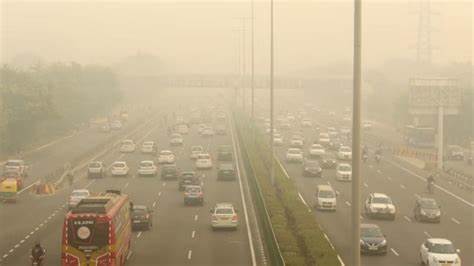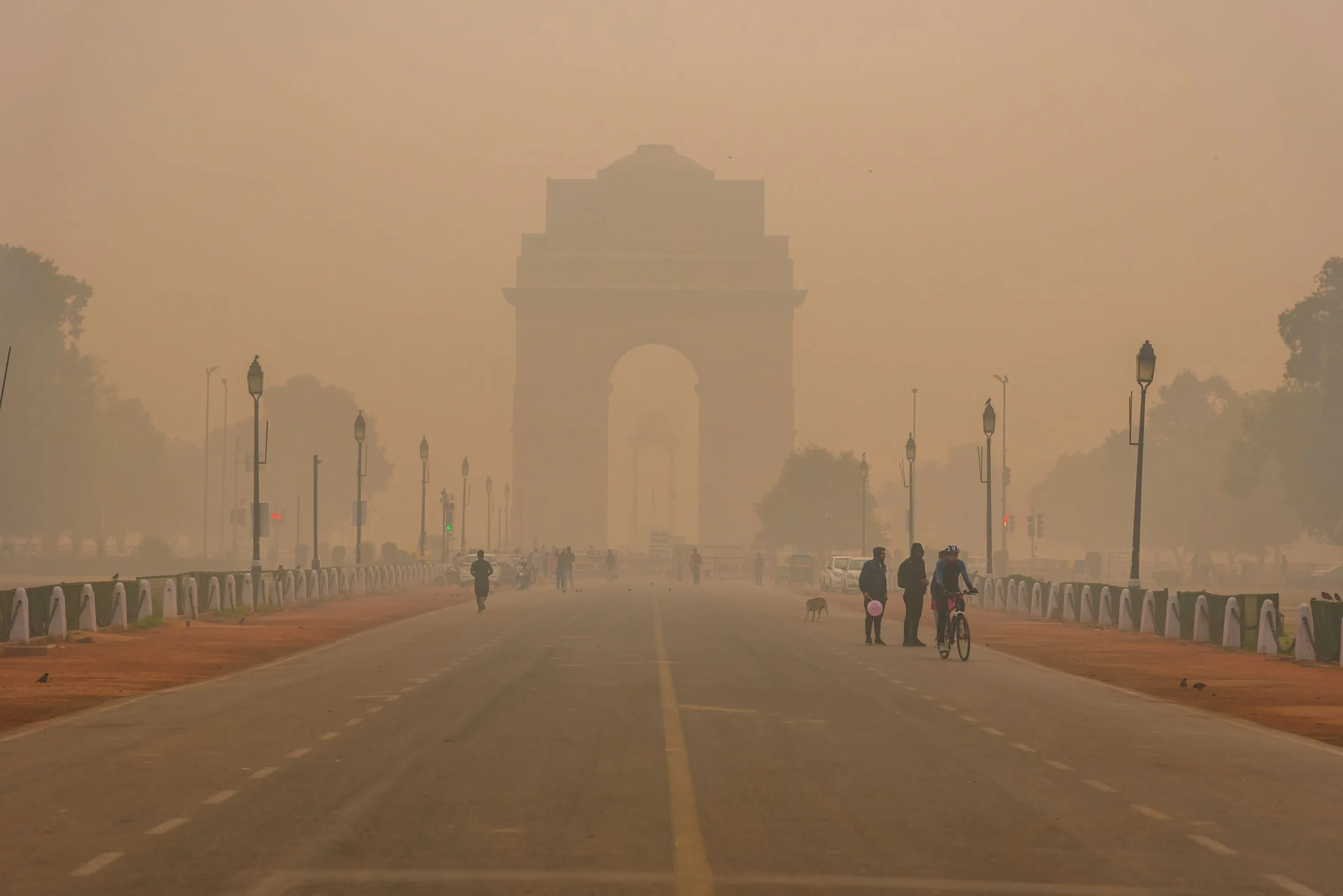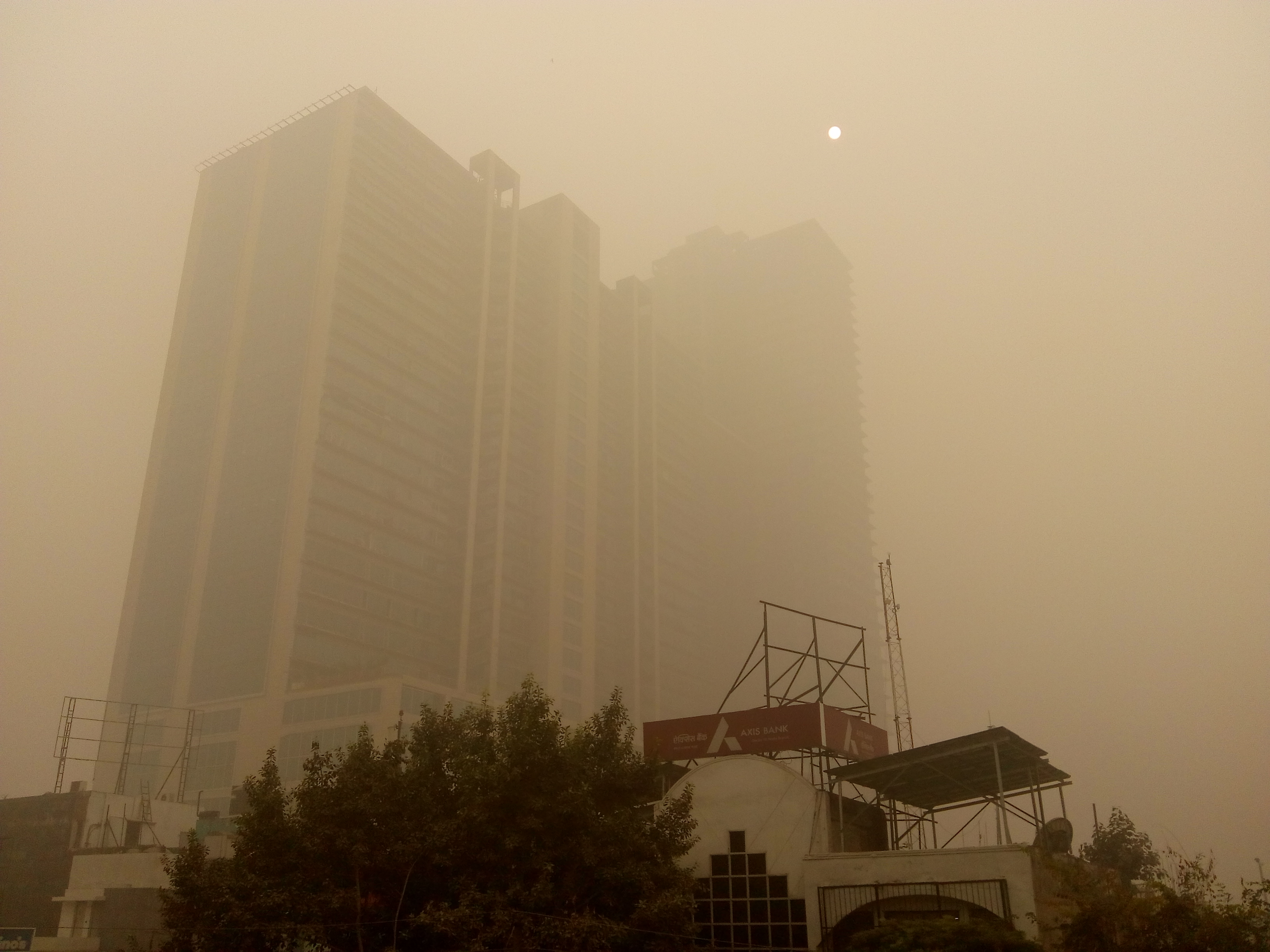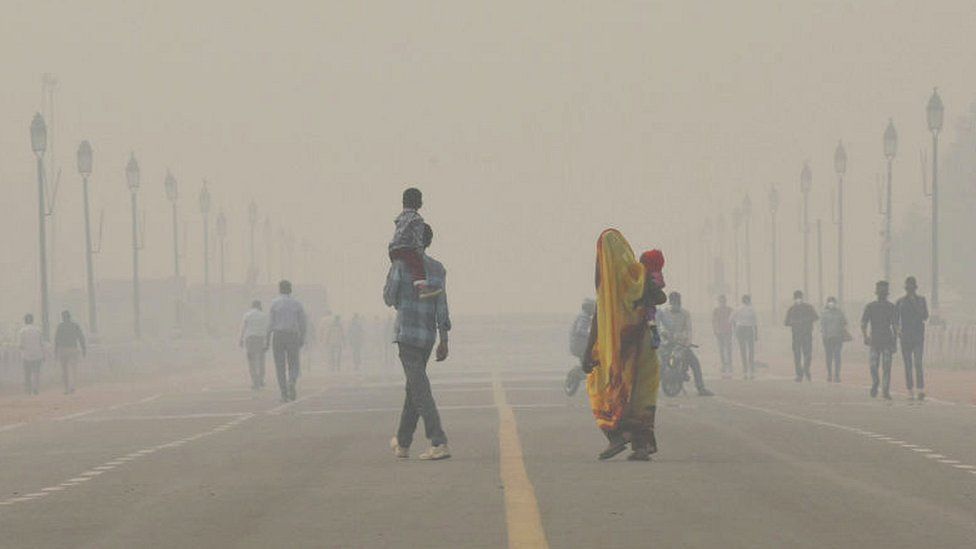Crisis Unveiled: Delhi’s Air Pollution Skyrockets to 100 Times WHO’s Health Limit, Forcing School Closures

Crisis Unveiled: Delhi’s Air Pollution Skyrockets to 100 Times WHO’s Health Limit, Forcing School Closures
The Indian capital, Delhi, finds itself in the midst of an unprecedented environmental crisis as the air quality index (AQI) has reached a staggering 500 in various parts of the city. This places the city’s air quality firmly within the severe category, spelling serious health concerns for its residents. Disturbingly, the PM2.5 concentration level, a key measure of harmful particulate matter in the air, is currently nearly 100 times higher than the limits deemed safe by the World Health Organization (WHO). This alarming situation has prompted authorities to take drastic measures, including the temporary closure of all primary schools in the city until at least November 10.
As Delhiites grapple with thick smog and rising air pollution levels, the well-being of millions is at risk. The city has, for years, been grappling with air pollution, but this latest development is a stark reminder of the urgent need for effective measures to combat the crisis.
What’s Behind This Alarming Spike?
Delhi’s air quality has been a matter of concern for quite some time, with the winter months typically exacerbating the problem. The combination of factors responsible for the recent spike in air pollution includes vehicular emissions, industrial activities, construction dust, and the burning of agricultural residues in neighboring states.
One of the most significant contributors to the crisis is the annual phenomenon known as stubble burning. Farmers in the neighboring states of Punjab and Haryana, who cultivate their fields during the same time of year, resort to burning crop residues to prepare their land for the next sowing season. This practice releases vast quantities of pollutants into the atmosphere, adding to Delhi’s pollution woes.
Another major source of air pollution is vehicular emissions, especially diesel vehicles, which release high levels of particulate matter and noxious gases. Construction dust from ongoing infrastructure projects also contributes to the suspended particles in the air, further deteriorating air quality.

Health Implications: Breathing Under Siege
The impact of such severe air pollution on public health cannot be overstated. Airborne pollutants, particularly PM2.5, can penetrate deep into the lungs and even enter the bloodstream, leading to a range of health problems. These include aggravated respiratory conditions, cardiovascular diseases, lung infections, and a heightened risk of cancer. Vulnerable populations, such as children, the elderly, and individuals with pre-existing health conditions, are particularly at risk.
The World Health Organization recommends that PM2.5 levels should not exceed 10 micrograms per cubic meter on an annual average. In Delhi’s current state, PM2.5 concentrations have skyrocketed to almost 100 times that limit, making it a dire public health emergency. Prolonged exposure to such extreme levels of air pollution can have long-lasting, detrimental effects on the health and well-being of the population.
School Closures: Protecting the Vulnerable
In response to the escalating air pollution crisis, Delhi’s authorities have taken the precautionary measure of temporarily closing all primary schools in the city until November 10. This decision is aimed at safeguarding the health of the youngest and most vulnerable members of the population. The suspension of in-person classes will hopefully prevent children from being exposed to the hazardous air quality and reduce the risk of respiratory illnesses.
However, school closures also highlight the gravity of the situation. When a city has to halt its educational activities due to environmental concerns, it underscores the severity of the problem at hand. The impact of this disruption on students’ learning and the logistical challenges it poses to families cannot be underestimated.

Public Concern and Activism
The deteriorating air quality has led to growing public concern and activism. Delhi residents are increasingly demanding effective and immediate action to address the issue. Social media campaigns, citizen initiatives, and protests have gained momentum, urging authorities to take concrete steps to mitigate air pollution.
Some of the proposed measures include stricter enforcement of emission norms for vehicles, promoting the use of public transportation, encouraging the adoption of cleaner energy sources, and finding alternative solutions to stubble burning by farmers. There is also a call for improved urban planning to reduce dust emissions from construction sites and better waste management practices.
Government Response: A Complex Challenge
The Delhi government, in conjunction with the central government, is faced with the complex challenge of tackling air pollution. Over the years, various measures have been introduced, such as the implementation of the Odd-Even scheme to restrict the use of private vehicles on alternate days, promoting the use of compressed natural gas (CNG) in public transport, and introducing regulations to curb industrial pollution.
However, the current crisis underscores the need for more comprehensive and sustained efforts. The authorities are under pressure to address not only the immediate crisis but also to work towards long-term solutions. This includes reducing dependence on fossil fuels, strengthening public transportation, and promoting the adoption of cleaner energy sources.
The governments have also been exploring international collaborations and technical solutions, such as smog towers and air purifiers in public spaces. These measures, while important, should be seen as short-term interventions to provide immediate relief.
The Economic Impact
Aside from the health implications, Delhi’s ongoing air pollution crisis also has significant economic repercussions. Studies have shown that air pollution leads to increased healthcare costs, lost workdays, and decreased labor productivity. It can also dissuade foreign investment and tourism.
Furthermore, the adverse effects of air pollution extend beyond city boundaries. Neighboring states are not immune to the consequences, and the situation demands a coordinated effort to address the root causes. The agricultural practice of stubble burning, for example, necessitates state-level interventions and alternative farming methods to reduce emissions.
Global Relevance
The crisis in Delhi is not unique. Air pollution is a global issue, and many major cities around the world face similar challenges. The situation in Delhi serves as a stark reminder of the urgent need for global cooperation in addressing environmental challenges.
Additionally, as climate change intensifies, extreme weather conditions and their associated environmental issues are likely to become more frequent and severe. This emphasizes the importance of adopting sustainable practices, transitioning to cleaner energy sources, and addressing the root causes of pollution.

The Way Forward: Collective Responsibility
Addressing Delhi’s air pollution crisis requires a multi-faceted approach, with collective responsibility at its core. It involves not only government action but also individual and community efforts to reduce pollution and protect public health. Here are some key steps that can contribute to improving the situation:
1. Promoting Sustainable Transportation: Encouraging the use of public transportation, cycling, and walking can help reduce vehicular emissions.
2. Reducing Agricultural Pollution: Implementing innovative farming techniques and providing incentives to discourage stubble burning can reduce emissions from the agricultural sector.
3. Enhancing Green Spaces: Increasing green cover and urban forests can help filter and purify the air, as well as provide spaces for recreation and relaxation.
4. Strict Emission Controls: Enforcing stringent emission norms for vehicles and industries is essential to reduce the release of harmful pollutants.
5. Investing in Renewable Energy: Transitioning to cleaner energy sources and reducing dependence on fossil fuels is crucial for long-term air quality improvement.
6. Public Awareness: Educating the public about the health risks associated with air pollution and promoting responsible practices is vital.
7. Government Accountability: Holding government authorities accountable for implementing and enforcing air quality regulations




